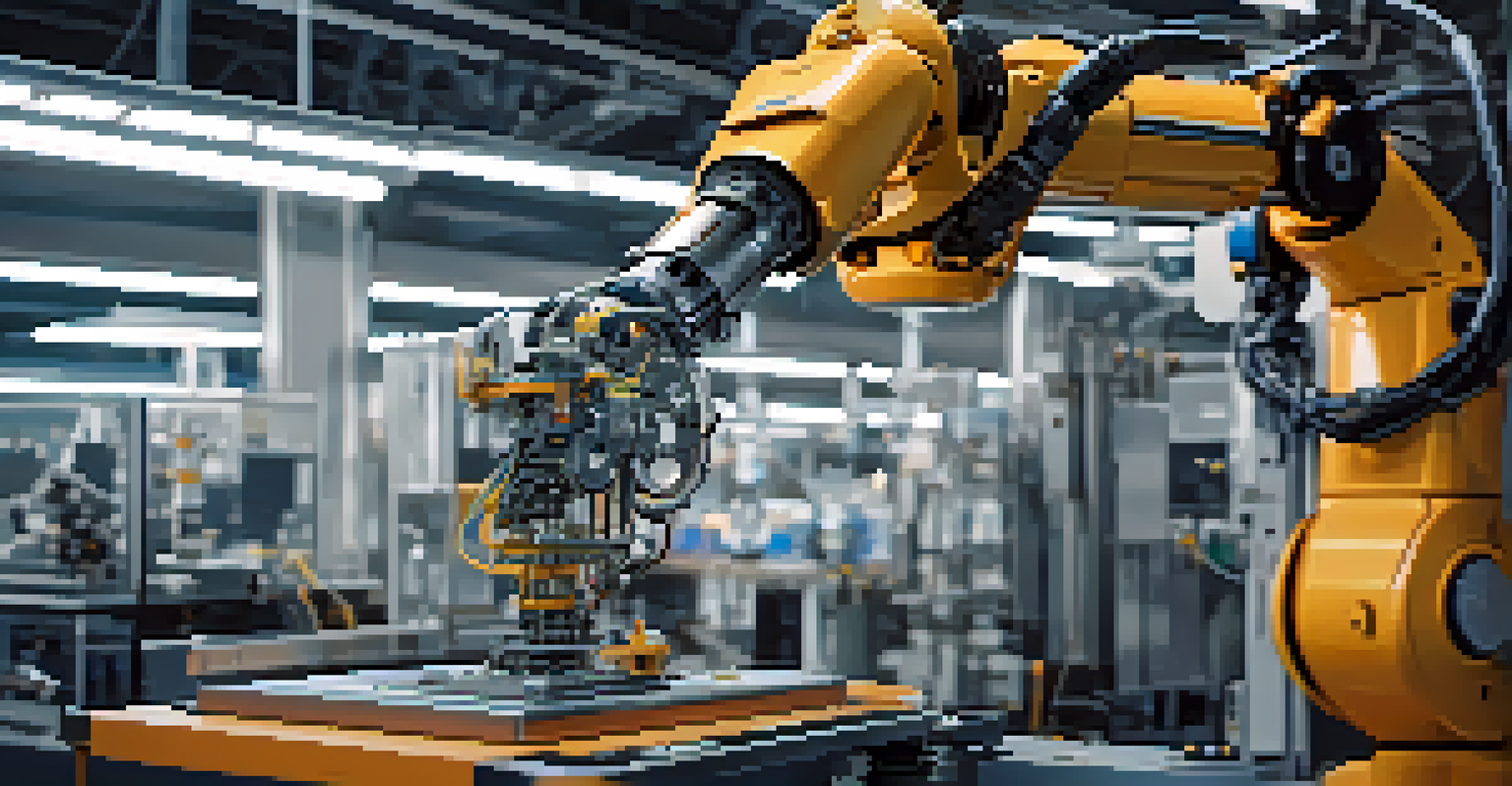Edge Computing and the Future of Smart Manufacturing

What is Edge Computing and Why Does It Matter?
Edge computing is a technology that brings computation and data storage closer to the location where it's needed. This reduces latency and bandwidth use, allowing for real-time data processing. In smart manufacturing, this means machines can communicate and make decisions faster, leading to more efficient production lines.
The greatest danger in times of turbulence is not the turbulence; it is to act with yesterday's logic.
Imagine a factory where machines can analyze data on the spot rather than sending it to a distant data center. This is akin to a chef tasting a dish while cooking, adjusting flavors instantly instead of waiting to serve it. Edge computing empowers manufacturers to respond to issues as they arise, enhancing productivity and reducing downtime.
As the manufacturing landscape becomes increasingly complex, edge computing is not just a trend—it's a necessity. It allows for smarter, more agile manufacturing processes that can adapt to changing demands and optimize operations on the fly.
The Role of IoT in Smart Manufacturing
The Internet of Things (IoT) plays a crucial role in smart manufacturing, linking machines, sensors, and systems to create a cohesive and intelligent ecosystem. IoT devices collect vast amounts of data, which, when processed at the edge, can lead to immediate insights and actions. This interconnectedness is what makes modern factories 'smart'.

Think of IoT as the nervous system of a factory, sending signals and data back and forth between machines and operators. If a machine starts to malfunction, the IoT system can alert technicians in real time. This proactive approach not only prevents costly breakdowns but also streamlines maintenance schedules.
Edge Computing Reduces Latency
By processing data closer to its source, edge computing minimizes delays and enhances real-time decision-making in manufacturing.
By integrating IoT with edge computing, manufacturers can harness the full potential of their data, enhancing everything from quality control to supply chain management. This synergy is a game changer, paving the way for more responsive and responsible manufacturing practices.
How Edge Computing Enhances Real-Time Decision Making
One of the most significant advantages of edge computing is its ability to facilitate real-time decision-making. With data processed at the edge, manufacturers can instantly react to operational changes, whether that’s adjusting production rates or troubleshooting equipment. This agility is essential in today’s fast-paced market.
In today's world, the only way to stay ahead is to be agile and responsive to change.
Imagine a scenario where a production line is running low on materials. Edge computing allows for immediate analysis of inventory levels and can trigger automatic reorders or alerts to staff. This is similar to a smart fridge that tells you when you’re out of milk—it keeps everything running smoothly without delays.
Real-time decision-making leads to improved efficiency and reduced waste, ultimately resulting in cost savings. In smart manufacturing, where every second counts, being able to make informed, timely decisions can significantly boost a company’s competitive edge.
The Importance of Data Security in Edge Computing
As with any technology that relies heavily on data, security is a top concern for edge computing in smart manufacturing. With devices processing sensitive information at various locations, it's vital to implement robust security measures. This includes encryption, secure access controls, and regular software updates to fend off potential threats.
Think of data security like a security system for your home. Just as you wouldn’t want anyone to access your personal belongings, manufacturers must protect their data from cyber threats. A breach not only compromises sensitive information but can also disrupt manufacturing processes, leading to significant financial losses.
IoT Enables Smart Manufacturing
The integration of IoT devices with edge computing creates an interconnected ecosystem that improves operational efficiency and responsiveness.
By prioritizing data security, manufacturers can confidently embrace edge computing. A secure edge computing environment not only safeguards proprietary information but also builds trust with clients and partners, showcasing a commitment to responsible operations.
Challenges in Implementing Edge Computing Solutions
While the benefits of edge computing are enticing, manufacturers face several challenges when implementing these solutions. One major hurdle is the integration of legacy systems with new edge technologies. Many factories still rely on older equipment that may not easily connect with modern IoT devices.
Imagine trying to fit a square peg in a round hole; that’s what integrating new technology with outdated systems can feel like. It requires careful planning and sometimes significant investment to ensure seamless operation. Manufacturers must assess their current infrastructure to determine the best approach for integration.
Additionally, training staff to work with these new technologies is crucial. Without proper training, employees may struggle to adapt, which can hinder the transition to a smarter manufacturing environment. Overcoming these challenges is vital to fully realize the potential of edge computing in smart manufacturing.
The Future of Smart Manufacturing with Edge Computing
Looking ahead, the future of smart manufacturing is closely tied to the evolution of edge computing. As technology continues to advance, we can expect even more sophisticated applications that enhance manufacturing processes. For instance, predictive analytics powered by edge computing can foresee equipment failures before they happen, allowing for preemptive maintenance.
Picture a factory where machines communicate with one another, sharing insights and optimizing performance without human intervention. This vision is becoming increasingly feasible thanks to edge computing, which fosters a collaborative environment for machines and systems. It’s like a well-rehearsed orchestra, where every instrument harmonizes to create beautiful music.
Data Security is Crucial
Implementing robust security measures is essential in edge computing to protect sensitive manufacturing data from cyber threats.
Ultimately, the integration of edge computing will lead to smarter, more sustainable manufacturing practices. By leveraging real-time data and making informed decisions, manufacturers can not only boost productivity but also reduce their environmental footprint, paving the way for a greener future.
Conclusion: Embracing Edge Computing for Competitive Advantage
In conclusion, edge computing represents a transformative force in the realm of smart manufacturing. By bringing data processing closer to the source, manufacturers can enhance efficiency, improve decision-making, and respond swiftly to market demands. It’s not just about keeping pace; it’s about gaining a competitive edge.
Just as a runner trains to outpace their rivals, manufacturers must embrace edge computing to stay ahead. The ability to analyze data in real time is like having an extra pair of eyes on the production floor, ensuring that everything runs smoothly. This proactive approach can differentiate a company in a crowded marketplace.

As we move forward, those who embrace edge computing will likely lead the charge in innovation and productivity within the manufacturing sector. The future is bright for smart manufacturing, and edge computing is at the forefront of this exciting evolution.